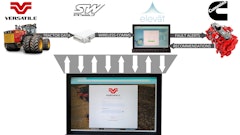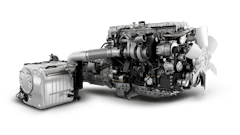While the ability of telematics to improve operations is undisputed, the technology has been slow to take off in the Chinese commercial vehicle market due to high prices. Nevertheless, government regulations and the technology's fuel efficiency features are proving to be a strong pull for numerous commercial vehicle operators, giving telematics solution providers in China a reason to feel optimistic.
New analysis from Frost & Sullivan, Strategic Analysis of Commercial Vehicle Telematics Market in China, finds that commercial vehicle and fleet operators' spending on telematics will surge over the next seven years, till 2021.
The Chinese Government's initiatives mandating the installation of satellite positioning and telematics systems in specific commercial vehicles bode well for the telematics market. Besides, the fuel efficiency of China's commercial vehicles is lower than that of the trucks in the Organization for Economic Cooperation and Development (OECD) countries; this concern has further fuelled the uptake of fleet management solutions such as telematics.
"Apart from the high prices of telematics, which are often equivalent to a small fleet operator's profits, the varied policies of local governments on commercial vehicles also peg back adoption rates," says Frost & Sullivan Automotive & Transportation Research Analyst Will Wong. "While changes in the regulatory framework are unlikely, varied local governments' requirements will be a long-term challenge as they complicate the business of fleets."
Currently, tourist buses, coaches, dangerous goods vehicles, tractor units and heavy-duty trucks are identified by the Chinese Government as the focal commercial vehicles for installing telematics. These vehicles are required to have factory-installed satellite positioning equipment and telematics control units while entering certain provinces. The need to improve the monitoring and management of these types of vehicles presents a huge opportunity for telematics suppliers in the commercial vehicle market.
Participants can also resolve the cost issue to some extent through partnerships with well-developed local participants. Although local partnership is not required, partnering with established local companies will lower the entry barriers.
"The market will open up for telematics providers that have the flexibility to offer customized solutions," notes Wong. "In a market marked by cost consciousness, meeting the budgets of various scales of fleet operators is vital for success."




![Hd Hyundai Xite Transformation Booth Image[1]](https://img.oemoffhighway.com/files/base/acbm/ooh/image/2023/12/HD_Hyundai_Xite_Transformation_Booth_Image_1_.657a32d4218f2.png?auto=format%2Ccompress&fit=crop&h=135&q=70&rect=113%2C0%2C1600%2C900&w=240)





















